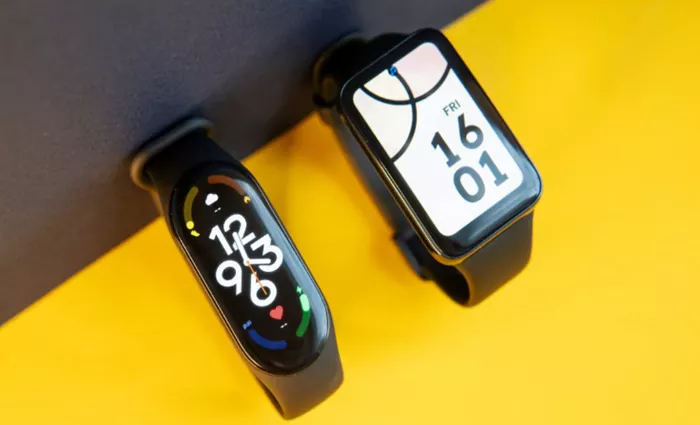Xiaomi has surged back to the forefront of the global wearable device market, outpacing Apple with 8.7 million units shipped in the first quarter of 2025 — a 44% year-on-year increase and securing a 19% global market share, according to the latest report from research firm Canalys.
The report reveals a strong rebound in the global wearable sector, which grew by 13% year-on-year to reach 46.6 million units shipped in Q1 2025.
Xiaomi’s comeback is attributed to the impressive performance of its Mi Band 9 and the strategic integration of its proprietary HyperOS platform. This marks the first time in nearly four years that Xiaomi has topped the global rankings, displacing longtime leader Apple.
Apple slipped to second place with 7.6 million units shipped — a modest 5% annual increase and a 16% market share. Despite its slower growth, expectations remain high for Apple as the Apple Watch nears its tenth anniversary. A significant redesign is anticipated in the second half of 2025, potentially revitalizing its market position alongside its robust health and wellness ecosystem.
Key Drivers of Xiaomi’s Market Resurgence
1. Aggressive Pricing Strategy
Xiaomi has capitalized on the price-sensitive segments of the market with budget-friendly devices like the Mi Band and Redmi Band series. Priced significantly below Apple’s offerings, the Mi Band 9, for instance, retails at NT$995 — a stark contrast to the Apple Watch’s NT$10,000 price point. Despite its affordability, the Mi Band 9 delivers essential features such as health monitoring and long battery life, making it an appealing option for first-time buyers and consumers in emerging markets like Southeast Asia and Latin America.
2. Ecosystem Integration via HyperOS
Xiaomi’s strategic rollout of its “human-car-home” ecosystem, enabled by its in-house HyperOS platform, has further solidified its appeal. HyperOS seamlessly connects smartphones, smart bands, and home devices, offering users a cohesive cross-device experience that fosters ecosystem loyalty and enhances brand stickiness.
3. Diverse Product Line Strategy
Unlike Apple’s singular focus on the Apple Watch, Xiaomi offers a diversified wearable lineup — spanning entry-level fitness trackers to advanced smartwatches under the Mi and Redmi sub-brands. This multi-tiered approach allows Xiaomi to address varied consumer needs across different price brackets.
A Shifting Battlefield: Ecosystem and Services
As hardware margins continue to thin, manufacturers are increasingly turning to software ecosystems and subscription models to drive growth. Canalys analysts emphasize that affordability, comprehensive functionality, and system integration are becoming the primary competitive advantages in the wearable space.
Huawei, for example, has made significant strides with its “Sports Health” app, combining device sales with data services. Its GT and Fit series helped the company ship 7.1 million units in Q1 2025 — up 36% year-on-year — placing it third globally.
Samsung recorded the highest growth rate among major players, with shipments climbing 74% to 4.9 million units. The company has maintained a dual strategy of targeting emerging markets with cost-effective models while reinforcing its high-end offerings in mature markets.
Meanwhile, Garmin saw a 10% increase in shipments to 1.8 million units, buoyed by the launch of its new “Garmin Connect+” personalized health analysis service. The move aims to deepen user engagement and extend customer lifetime value, securing Garmin the fifth spot in the global rankings.
What Consumers Want: Value, Battery, and Health Features
A recent Canalys consumer survey highlights the shifting priorities of wearable buyers. Price, battery life, and health tracking capabilities now rank as the top three purchase considerations, surpassing brand prestige and design aesthetics. This trend suggests that as wearables become increasingly mainstream, future competition will hinge not on hardware specs alone, but on software innovations and the ability to deliver integrated, value-added services.
As the global wearable market continues to evolve, Xiaomi’s resurgence and the broader industry pivot toward ecosystems and services underscore a new chapter in the race for wrist dominance.


